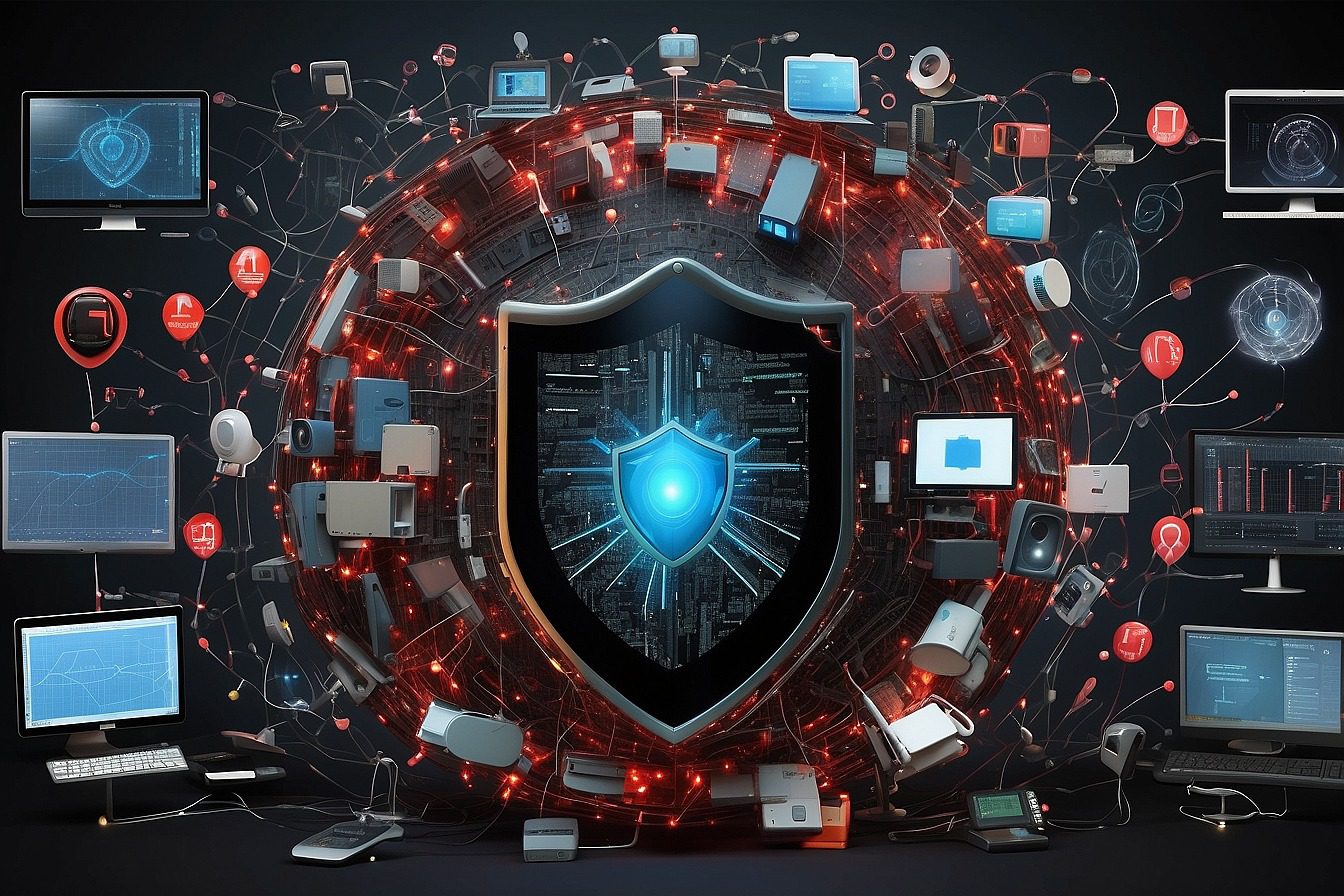I was surfing the web, minding my own business, and wham! Cyber fraud comes knocking on my virtual door. It’s like a horror movie, but instead of a masked villain, it’s a faceless hacker. It’s honest, terrifying, and can happen to me or my business. But fear not, dear reader, because I’ve got a survival guide for you. This article will dissect various types of cyber fraud, learn how to protect ourselves personally, and discuss precautions our businesses can take. We’ll even dive into some successful case studies, turning you into a cybercrime-fighting superhero. Ready to laugh in the face of digital danger? Let’s do this!
Understanding the Threat of Cyber Fraud
If you’re anything like me, wrapping your head around the looming Godzilla of cyber fraud might have you scratching your noggin. Fear not, my friend. I’m here to help you dive into the deep, dark waters of cybercrime psychology, which is much less scary than it sounds… I promise!
Let’s get this straight – cybercriminals are sly foxes who love nothing more than exploiting our human weaknesses, like fear and ignorance. They’re master puppeteers, pulling at our heartstrings to make us easy targets. But who says we can’t learn their tricks and stay one step ahead? It’s like being the detective in your own personal “CSI: Cyber Fraud” episode – pretty cool, right?
Now, put on your imaginary detective hat and join me in examining the global cybercrime trends. Yes, it’s a reality as sobering as your black coffee on Monday morning: cyber threats are growing faster than my pile of unwashed dishes! And it’s not just the big guys in the crosshairs anymore. Nope, these modern-day digital bandits also target individuals and small businesses like you and me. So, it’s high time we upped our vigilance game.
Common Types of Cyber Fraud
Dive with me into the mysterious depths of the cyber fraud ocean, where there’s more lurking than digital sharks. The first beast we might bump into is the cunning Phish, separate from the band. This slimy creature lures you into giving up your precious secrets, I mean… sensitive data.
Next up, we have the master of disguise, Identity Theft. This sneaky critter impersonates you, the innocent bystander, and commits heinous cyber crimes. Now, that’s what I call a terrible doppelganger!
Don’t forget about Ransomware, the pirate of our cyber sea. This swashbuckler takes your data hostage and demands a hefty bounty. Yo ho ho and a bottle of… panic?
You might wonder, “How do I fend off these digital Davy Joneses?” Well, that’s where our trusty sidekick, cyber insurance, sails in. While it may not be able to walk the plank (or stop fraudsters), it can lighten the weight of your gold pouch (or minimize your financial loss).
Most policies cover loss of income due to business interruption (because nobody likes being put on hold), the cost of sending “we’ve been hacked” letters to customers (stamps not included), and even those pesky ransom payments. Remember, knowing is half the battle, and understanding these fraudsters’ tactics is your first step to protecting your treasure chest…err, I mean, your business.
Personal Cyber Fraud Prevention Strategies
As we paddle more deeply into the sea of cyber safety, I will share some savvy strategies to keep those digital pirates at bay. Now, your first line of defense? Password protection. Don’t underestimate its power – it’s like the garlic to your online vampire. And no, “password123” doesn’t cut it. Be creative, make your passwords intense and complex, and change them as often as you change your socks (I hope that’s pretty often).
Next up on our personal cyber fraud prevention hit parade is the magic of two-factor authentication. It’s like a secret handshake for your digital life, involving not just a password but a second element only you can access. This could be your fingerprint (not the one you left in the cookie jar), a unique code pinged to your phone, or a physical token.
Last but not least, always keep your guard up when sharing sensitive information online. Remember, cyber fraud can happen to anyone, even you or me. But with these strategies, we’re not just surviving the digital world but thriving in it. So, let’s give ourselves a fighting chance against these cyber buccaneers. Because who doesn’t love a good pirate fight? Am I right?
Cybersecurity Measures for Businesses
Just like I always ensure my digital life is as secure as Fort Knox, it’s crucial to fit my business with kick-butt cybersecurity measures. The first line of defense? Employee Training Programs. And, no, it’s not about teaching them how to doodle on their notepads while pretending to listen. It’s about fostering a culture of security faster than you can say, “Phishing Scam!” Each of us should be as adept at spotting a phishing attempt as a cat at catching a laser pointer dot.
Now, let’s talk about something we all love to hate – Software Upgrades. Those pesky updates pop up at the most inconvenient times. But let’s face it, they’re as unavoidable as that embarrassing uncle at family gatherings. These updates are like spinach to Popeye – they beef up your systems, patching known vulnerabilities and equipping them with the latest defense mechanisms.
Case Studies in Successful Fraud Prevention
Look out, cyberworld, here I come! I’m strapping on my cybersecurity armor and plunging headfirst into the fortress of resilience. Let’s pull back the curtain on real-life, no-nonsense, downright victorious examples of successful fraud prevention.
Why should we care about understanding the psychology of fraudsters, you ask? It’s like trying to win a chess game without knowing how the pieces move. And trust me, outsmarting these fraudsters is just as satisfying as shouting “Checkmate!”
So, let’s check out some real-life, “I-can’t-believe-they-pulled-it-off” case studies:
– First up, we have our superstar *Company A*. They decided to step up their game and bring in the big guns, implementing multifactor authentication. The result? A whopping 80% drop in fraudulent access. That’s right, 8 out of 10 fraudsters knocked right off their game!
– Next in line are the brainiacs at *Company B*. They went all-in, educating their employees about the cunning ways of fraudsters. What happens next will blow your socks off – significantly decreasing successful phishing attacks!
– Not to be outdone, *Company C* went for the combo move, blending both methods and voila! They’ve got themselves a virtually fraud-free fortress!
These examples are like a shining beacon of hope, showing us how understanding the tricks up a fraudster’s sleeve and adding some extra, shiny layers of security can drastically reduce cyber fraud incidents. It’s about more than just having these measures, folks, but using them effectively. So, keep those eyes peeled, stay in the loop, and you’ll be as safe as a kitten in a room full of pillows!
Frequently Asked Questions
What Legal Actions Can Be Taken if One Becomes a Victim of Cyber Fraud?
Well, let me tell you a funny yet quite serious thing – if I ever fall victim to cyber fraud, I’ve got a game plan all set! You bet I’m going to take some legal action. First, I’m reporting the fraud faster than you can say “cybercrime.” Then, I’ll play detective, analyzing those fraudulent emails for evidence like I’m in an episode of CSI: Cyber. The keyword here is “analyzing fraudulent emails,” folks. We can’t forget the SEO now, can we?
Next up, I’m utilizing every victim support system out there. They’ll know me on a first-name basis, trust me. And then, the pièce de résistance – I’m marching straight to my lawyer’s office. And if you think you can do this alone, think twice. Legal recourse is a tricky beast, best left to the pros. So remember, in the face of cyber fraud, be a Sherlock, not a sitting duck!
How Can Insurance Companies Help in Mitigating the Risks of Cyber Fraud?
Well, let me tell you, folks, I’m just like you: scared to death of cyber fraud. But guess what? Insurance companies are our knights in shining armor! They have this cool trick up their sleeve – they can help me, you, all of us, dodge those nasty cyber fraud risks. It’s just like a superhero power but without the spandex!
They do it by offering these fabulous insurance coverage options and risk assessment strategies. These insurance gurus will snoop around (in a good way, I promise) and assess my vulnerability to cyber-fraud attacks. And trust me, I’m as vulnerable as a rabbit in a fox den. Then they’ll recommend some nifty protection measures. It’s like having a personal bodyguard for your data, only less muscle and more brains.
And here’s the kicker: they also provide coverage in case of financial losses. It’s like having a safety net when walking on a tightrope over a pit of cyber fraudsters! So, if you’re like me and your tech-savviness extends only to finding the on-off button, having these insurance companies on your side is a real lifesaver.
What Psychological Techniques Do Cyber Criminals Often Use to Trick Their Victims?
As an expert in the thrilling and sometimes comical world of cybercrime, I’ve seen firsthand how these sly cyber villains use psychological techniques, clever as a fox, to bamboozle their poor victims. They’re not just tech wizards, folks; they’re also masters of manipulation and phishing tricks.
You’d be amazed at how they can play your emotions like a fiddle, creating a sense of urgency to make a cheetah look slow. Or, they can instill fear in you, making a haunted house seem like a walk in the park. And why do they do this? To trick you into handing over sensitive information, like your secret chocolate stash, to your sweet-toothed sibling.
Ah, the cunning art of cyber deception! It’s a wild, wild web out there, my friends. So, keep your wits about you!
How Has the Evolution of Technology Increased the Risk of Cyber Fraud?
As a tech-savvy individual, I’ve noticed the evolution of technology is like a sweet cherry pie with a possible side of cyber fraud! With each click, swipe, or tap, I’m diving deeper into the online world, increasing my chances of encountering these tech-savvy pirates. Despite being wrapped in the warm blanket of internet safety measures, these digital swindlers have figured out how to slip through the cracks, turning technological advancements into their playground for sophisticated scams.
It’s like playing a never-ending game of whack-a-mole, where the moles are potential threats, and I’m always one step away from being the next target. It’s a thrilling and slightly terrifying digital rollercoaster ride!
Don’t get me wrong, I love technology as much as the next person, but sometimes, it feels like an elaborate scheme to keep me on my toes. Who knew surfing the web could become an extreme sport? So, buckle up, fellow netizens, because the World Wide Web is a wild ride!
Are Any Specific Industries or Sectors More Susceptible to Cyber Fraud?
Absolutely! In my humble experience, I’ve found that industries such as finance, healthcare, and retail are like honey to the bees of cyber fraud. You might be wondering, “Why these industries?” Well, it’s simple. They’re like the Willy Wonka’s Chocolate Factory for fraudsters, stuffed with all the valuable data they could ever dream of! Don’t get me wrong, it’s not all doom and gloom. They can stiffen their defenses by boosting their cybersecurity investments and embracing fraud prevention strategies like they’re going out of fashion. It’s like armoring a turtle, but instead of a turtle, it’s a multi-billion dollar corporation. Instead of a shell, it’s firewalls. Totally the same, right?
Conclusion
As I wrap up my techie sermon for the day, let me tell you, that cyber fraud isn’t a mythical beast. It’s as accurate as the cookies your browser keeps storing (and I’m not talking about the chocolate chip kind). Whether you’re an individual who can’t resist online shopping or a business owner managing mammoth transactions, you can be a target.
But wait to hit the panic button! You can significantly trim down your risk by getting savvy about common types of fraud, flexing your digital muscles with personal prevention strategies, and donning the armor of robust cybersecurity measures. There are enough success stories out there to prove that it’s possible to outsmart these keyboard warriors.
Stay informed, stay vigilant, and remember, your digital safety is in your hands. Or, more specifically, at your fingertips! Because let’s face it, we’re more likely to lose our car keys than our smartphones. So go on, equip yourself with the proper knowledge, gear up with the right tools, and show these cyber baddies who’s boss!




